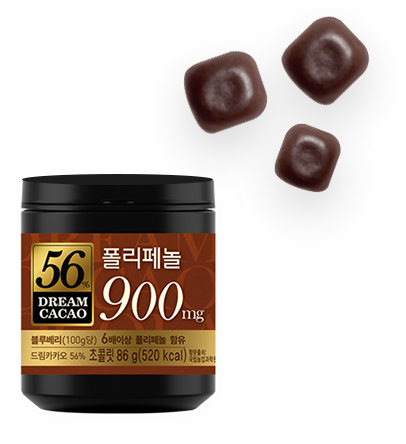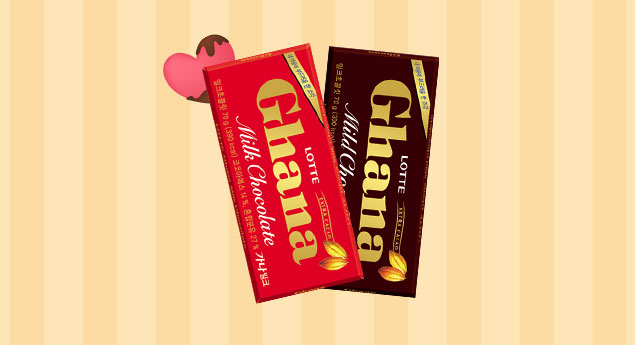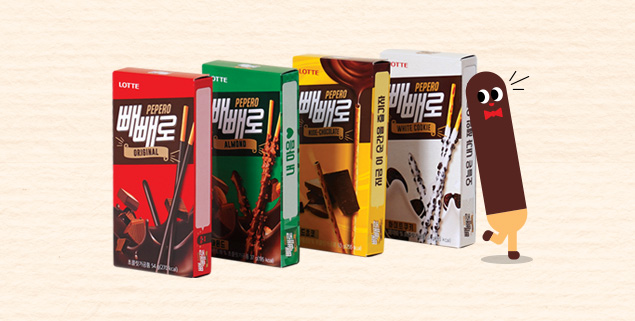When did we start
eating chocolate?
-

The ancient Mayan and Aztec people drank a beverage made with cacao beans.
At first, they ate only the fruit of the cacao fruit and discarded the bitter seed. However, over time, they came to prepare a beverage using the seed. The drink was nutritious and helped to restore vitality, and became a beverage reserved for the king. The Aztec king Moctezuma was extremely fond of this bitter, viscous drink called ‘the food of the gods’. He would down more than 50 cups a day. Dried cacao beans were called ‘brown gold’ and used as currency. A zucchini was traded for four beans, a rabbit for 10, and a slave was worth 100.
-

Chocolate was brought back to Europe by Columbus in the year 1502, but the Europeans failed to recognize its worth.
The Spanish invader Cortez, however, realized the value of the cacao beverage and used it to help his soldiers recover from fatigue. Cortez presented the chocolate drink to Carlos I, the monarch of Spain, in 1526. It was only then that the ‘food of the gods’, cacao, came to be known to Europe and the rest of the world. Chocolate became a craze among Europe's royalty and aristocrats. Chocolate cafes and clubs sprang up everywhere, and chocolate shops and chocolate artisans were hired by the royal court to make chocolate exclusively for the royal family.
-

Early chocolate was in the form of a beverage.
Solid chocolates as we know them now took a further 200 years to develop after the cacao bean was introduced to Europe. Chocolate powder was first introduced in 1679, and then in 1828, the Dutchman Van Houten developed a technique to extract cacao butter from cacao beans. The butter was used to make the first example of chocolate in the solid form we enjoy today. In 1876, Daniel Peter of Switzerland developed milk chocolate, which neutralizes the bitterness of cacao. The gentler flavor led to further development of chocolate manufacturing. At the end of the 19th century, an apparatus able to grind cacao beans into a find powder was invented, enabling the production of finer quality chocolate.
-

From the ancient Aztecs to imperial Europe, chocolate had consistently been a favorite of royalty and nobility. In Korea As well, chocolate was introduced as a snack for royalty.
The personality responsible for bringing chocolate to the Korean royal court was Son Tak, responsible for western cuisine and receptions for guests to the court of the Korean Empire. It's said that the first Korean to taste chocolate was the Empress Myeongseong. Chocolate became available to the Korean general public post-World War II, in the form of surplus government-issue chocolate from American forces in stationed in Korea. The first Korean-made chocolate was born in 1968. LOTTE Wellfood began producing chocolate with the launch of Ghana Chocolate in 1975. Production of the chocolate-coated biscuit finger snack Pepero began in 1983.
What types of chocolate
are there?
-
Chocolate
Cocoa processed with additional food additives, containing at least 30% cocoa solids
(18% or more cocoa butter, 12% or more non-fat cocoa solids) -
Milk Chocolate
Cocoa processed with milk and additional food additives, containing at least 20% cocoa solids (25% or more non-fat cocoa solids),
with at least 12% milk solids and at least 2.5% milk fat) -
White Chocolate
Cocoa processed with additional food additives,
containing at least 20% cocoa butter,
with at least 14% milk solids and at least 2.5% milk fat -
Compound chocolate
Cocoa processed with additional food additives, containing at least 7% cocoa solids
-
Processed chocolate products
Nuts, Candies, Biscuits or other edible food products mixed, coated or filled with chocolate, with a cocoa solids content of 2% or more

Nothing says chocolate like Valentine’s Day

Valentine’s Day is a day commemorating Saint Valentino, a priest and physician from third century Rome. Emperor Claudius of ancient Rome had forbidden young men from getting married, so that he might wage war against Rome’s rival countries. The Roman priest Valentino violated this ‘marriage ban’ and officiated weddings for young couples in love. With young couples flocking to the priest to be wed, the emperor soon became the wiser. Valentino was executed on February 14, 270 CE. People of later generations named him a saint in honor of his memory. The custom of women giving gifts of chocolate to men is said to owe to the infamous Casanova of the 18th century, who considered chocolate an aphrodisiac.


English people are said to have observed Valentine's Day since around the year 1400. Historians say that the custom of sending love letters on Valentine’s Day was begun by Charles, duke of Orléans, who sent a love poem to his wife from his dank cell in the Tower of London in the year 1415. The custom of sending romantic letters was gradually substituted by gift-giving. Starting around the 1700s and 1800s, stores began selling collections of pre-written messages - ‘valentines’ - alongside special valentine's day gifts, the most popular of which were chocolates. Middle school girls in Busan and the surrounding area in the 90s used to give each other gifts of Pepero to wish each other long, slender good looks. The date on which the Pepero were exchanged was long and slender too: 11.11. Today, the giving of Pepero on this special day involves all Koreans young and old. Friends give to friends, students give to teachers, children give to parents, and so on. Pepero Day is about showing appreciation, demonstrating friendship, and celebrating love. First used by Casanova As an aphrodisiac, chocolates have today become synonymous with love. Share the love and show your appreciation with your significant other and friends.
Pepero Day - Valentine's Day in Korea

Middle school girls in Busan and the surrounding area in the 90s used to give each other Pepero as gifts to playfully wish each other to maintain long (tall) and slender shape. The date on which the Pepero were exchanged was long and slender too: 11.11. Today, the giving of Pepero on this special day involves all Koreans young and old. Friends give to friends, students give to teachers, children give to parents, and so on. Share the love and show your appreciation with your significant other and friends.
